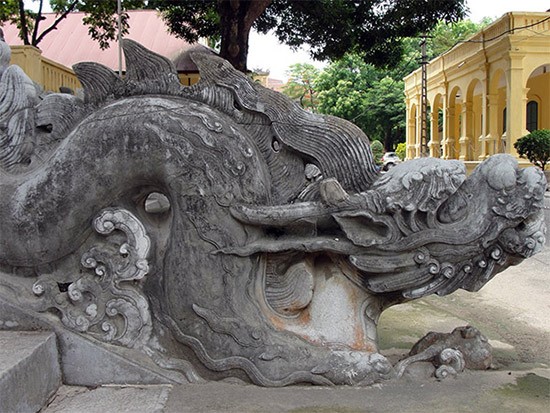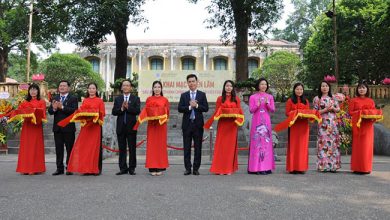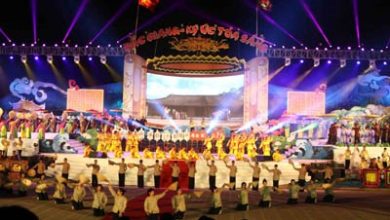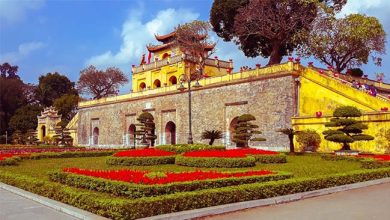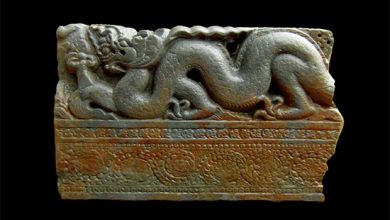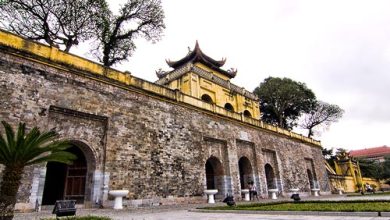Restore Kinh Thien Palace: Not only idea
The idea of Kinh Thien Palace restoration at the Imperial Citadel of Thang Long has supported by scientists. However, by now, the restoration of Kinh Thien Palace has still been a large challenge to the specialists.
Stone dragons in Kinh Thien Palace was made in 1467 and are the type of the King dragon which has five toes. They were the symbol of the King’s power, excellent and typical architectural heritages under Le So dynasty.
Replying reporter of the Online Newspaper of the Government, Assoc. Prof, Dr. Tong Trung Tin, Director of Vietnam Institute of Archaeology assumed that if the idea was not realized, we could not restore Kinh Thien Palace.
Dear Sir, many scientists have agreed with the fact that “early returning of Kinh Thien Palace space”, what is about your opinion?
Assoc. Prof, Dr. Tong Trung Tin: The tended study of ancient capital city and imperial city for improvement of heritage values has been performed in East Asia, typically Japan, Korea and now Vietnam. In details, regarding Kinh Thien Palace study, in which two main tendencies which are conservation and value improvement, the tendency of remaining the primitive conditions as the archaeological site at 18 Hoang Dieu coincides with opinions of European researchers.
A current common tendency in Japan and Korea is gradually careful study of heritage; upon sufficient conditions, the restoration will be performed; for example, the restoration of Dai Kim Palace in Nara ancient capital (Japan) or restoration of imperial capital in Korea…
In the Imperial Citadel of Thang Long vestige, there are only modern houses, without stamp of ancient palace. We should perform archaeological study; the typical architectural vestiges with sufficient conditions should be restored. Some researchers have recommended the restoration of Kinh Thien Palace premises and main Kinh Thien Palace which was giving-audience place of Le So dynasty and Mac and Le Trung Hung dynasties later.
According to opinion of scientists, the restoration of Kinh Thien Palace is necessary, but we cannot be in a hurry?
Assoc. Prof, Dr. Tong Trung Tin: In the Imperial Citadel of Thang Long vestige, the Main Gate, Kinh Thien and Great Court ground are relatively recognized and located clearly. These area are recoverable because the architecture under Le dynasty, in which important land mark which is dragon stair and two dragon-graved handrails, 2 flower-graved handrails and sophisticated stone… still exists. The archaeological study has proved that this position is primitive. The Great Court ground from such position to the Main Gate has gradually appeared.
The most difficult thing is the restoration of superstructure, which disappeared. However, upon the restoration of vestiges under Le So dynasty is defined and architecture under Le dynasty has still existed somewhere, general architectural studies will find out tiles, bricks or scope of palace and foundation… Thereby, it is said that the full study needs to be done firstly, then systematize and correct documents, finally restore.
The restoration of Kinh Thien Palace will also spend many phases. Firstly, it is required to study; then systematize documents. On the other hand, it is required to restore on drawings, 3D-4D image, then model… All works require the contribution of researchers and scientists. Finally, after all documents are considered in all aspects and feasibility, the restoration will be carried out.
What is the reasonable route of restoration?
Assoc. Prof, Dr. Tong Trung Tin: Methodical and scientific studies and investment are required. It is not simple at all. If the central sector of the Imperial Citadel of Thang Long remains unchanged, it does not look like the Imperial Palace. The first phase is to carry out archaeological survey and collect documents. This is the most original thing. Current archaeological excavations have still been performed on small area. Le dynasty is selected for the restoration because the foundation of Kinh Thien Palace and the Main Gate (Doan Mon) were under Le So dynasty.
Any dynasty is also important. The conservation of Ly- Tran- Le vestiges, which were underneath the ground, will be carried out under the form of excavation and selection of typical vestiges; besides, remove some worthless architectural works which are not suitable with the landscape of the central sector of the Imperial Citadel of Thang Long.
Do you think that with the speed of current study, we will spend tens of years on collecting sufficient documents for the restoration of Kinh Thien Palace?
Assoc. Prof, Dr. Tong Trung Tin: As I know, the Thang Long- Hanoi Heritage Conservation Centre recommended studying the returning of Kinh Thien Palace space. This is a pressing and necessary idea in accordance with functions of heritage conservation unit. I believe that scientists will participate to complete this project. Regarding time, we must start above-mentioned tasks immediately. If the idea is not progressed, the restoration cannot be realized.
Viet Ha

